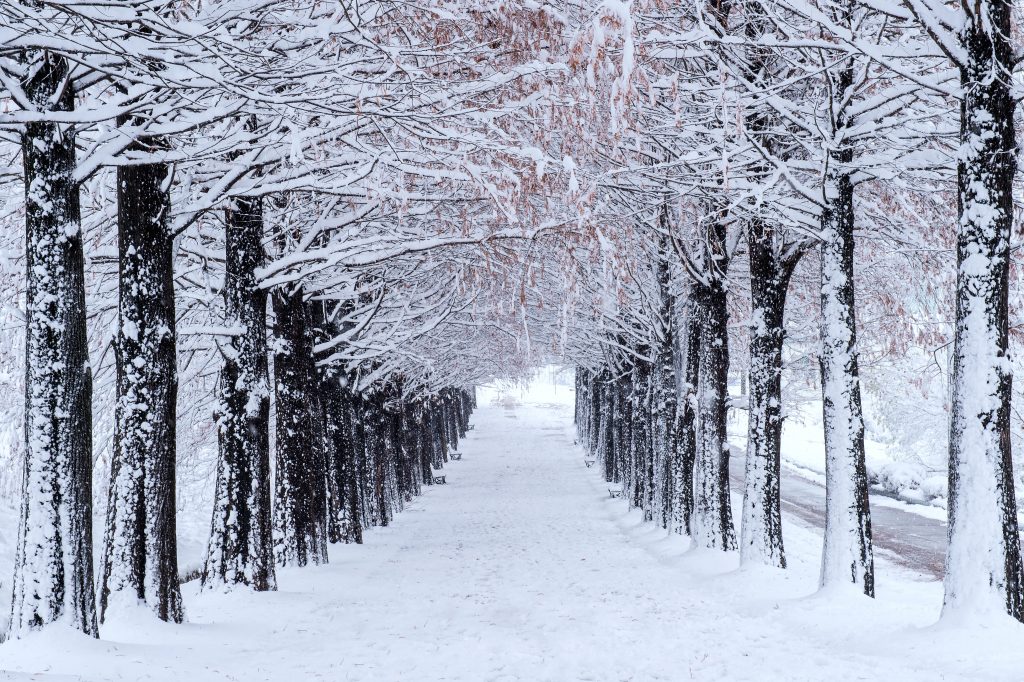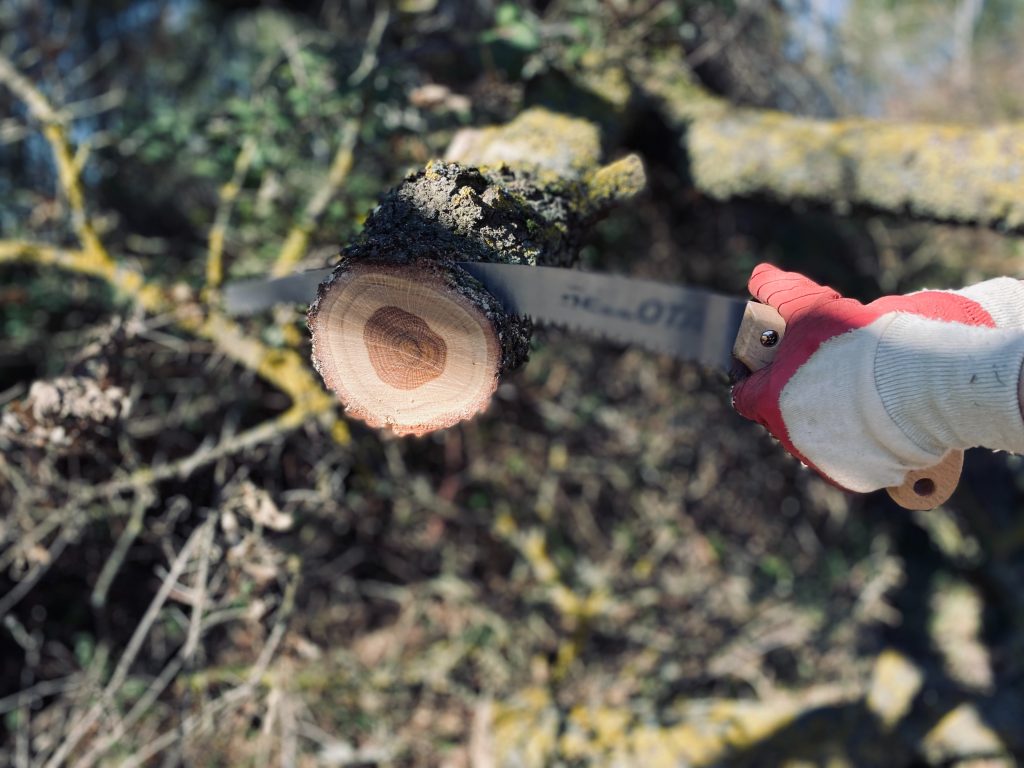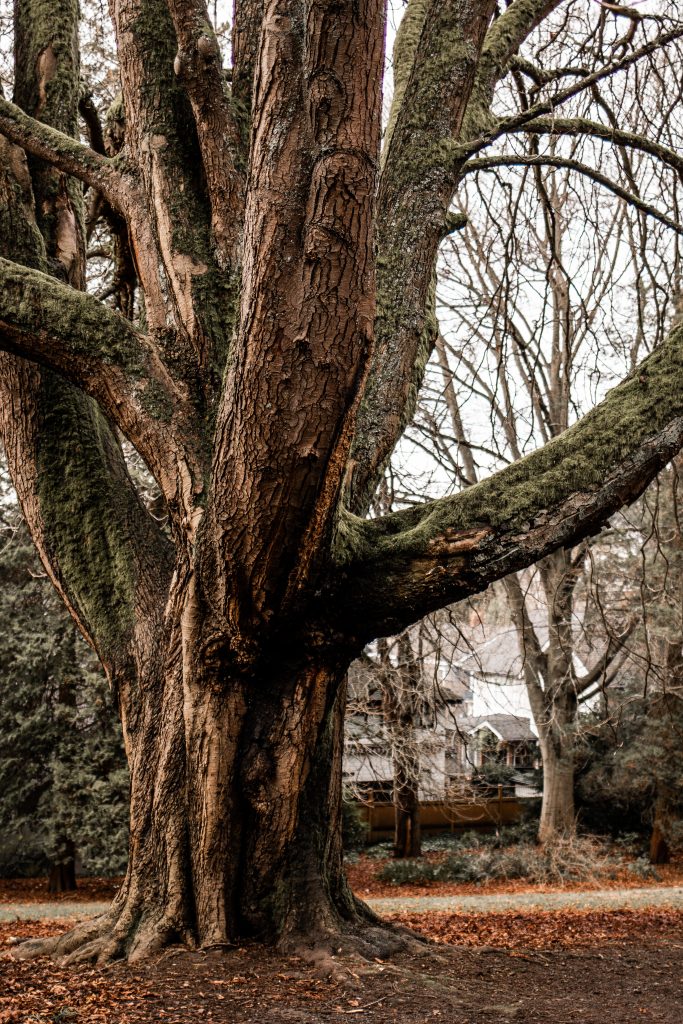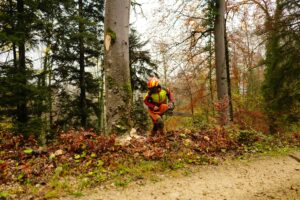Best Practices for Winter Tree Care
BEST PRACTICES FOR WINTER TREE CARE
Winter care for trees is essential to ensure their health, resilience, and longevity during the harsh conditions of the cold months. Trees are living organisms, and just like any other living thing, they require special attention and care to thrive even when faced with adverse weather. The importance of winter tree care can be understood through several key points:

1. Moisture Retention: Winter conditions, including cold winds and low temperatures, can lead to the loss of moisture from tree tissues. Proper winter care practices like mulching and adequate watering before the ground freezes help trees retain the moisture they need to stay healthy.
2. Root Health: Trees depend on healthy root systems to absorb water and nutrients. Cold temperatures can lead to frozen soil, making it difficult for roots to access water. Ensuring proper hydration and insulation through mulching contributes to maintaining robust root health.
3. Preventing Desiccation: Evergreen trees and shrubs continue to lose water through their leaves during winter, a phenomenon known as desiccation. Applying anti-desiccant sprays and wrapping sensitive trees can protect them from excessive moisture loss.
4. Minimizing Sunscald: Sunscald occurs when the bark heats up on sunny winter days and then rapidly cools at night, causing cracks and damage. Proper winter care practices like wrapping tree trunks and positioning trees to minimize exposure to direct sunlight can prevent sunscald.
5. Reducing Winter Stress: Trees naturally go through a period of dormancy during winter, but they can still experience stress due to extreme cold, freezing and thawing cycles, and harsh winds. Winter care measures such as pruning weak branches and applying winter mulch can reduce this stress.
6. Pest and Disease Management: Some pests and diseases are more active during winter, taking advantage of weakened trees. By practicing winter care routines like monitoring for pests, applying dormant oil sprays, and addressing potential issues early, you can prevent infestations and diseases.
7. Snow and Ice Load: Accumulation of heavy snow and ice on branches can cause them to bend, break, or even uproot entire trees. Proper snow removal techniques and assessing trees for hazards during and after winter storms can help prevent such damage.
8. Long-Term Tree Health: The effects of winter stress and damage can carry over to the following growing season, affecting tree growth, leaf production, and overall health. Proper winter care sets the foundation for a healthy and vibrant growing season.
9. Economic and Aesthetic Value: Trees contribute to property value, aesthetics, and overall landscape appeal. Well-maintained trees are more likely to thrive and continue enhancing your property’s beauty and value.
10. Environmental Impact: Healthy trees play a crucial role in the environment by absorbing carbon dioxide, releasing oxygen, providing wildlife habitats, and reducing erosion. By ensuring their health during winter, you contribute to the overall well-being of the ecosystem.
Winter care for trees is a vital investment in their well-being. By implementing proper care practices, you provide trees with the best chance to withstand winter challenges, recover quickly in spring, and continue to offer their numerous benefits for years to come.
Impact Of Harsh Weather Conditions On Trees
Harsh weather conditions can have significant impacts on trees, affecting their health, structural integrity, and overall well-being. Trees are susceptible to a range of adverse weather conditions, each of which presents unique challenges. Here’s an overview of the impacts of harsh weather conditions on trees:

1. Winter Cold and Frost:
• Dehydration: Cold temperatures can cause trees to lose moisture through their leaves and stems. This dehydration can stress trees and compromise their health.
• Freezing and Thawing: Fluctuations between freezing and thawing can lead to soil heaving, damaging roots and causing instability.
• Root Stress: Frozen soil can limit water uptake by roots, potentially leading to root stress and decreased nutrient absorption.
2. Winter Winds:
• Desiccation: Cold winds can accelerate water loss through tree leaves, causing desiccation and weakening the tree.
• Branch Breakage: Strong winds can lead to branch breakage, especially if the tree’s structure is compromised or weak.
3. Snow and Ice Accumulation:
• Branch Breakage: Heavy snow and ice accumulation on branches can cause them to bend, break, or split under the weight.
• Uprooting: Snow and ice loading can destabilize a tree’s root system, leading to uprooting in extreme cases.
• Sunscald: Sunlight reflecting off snow can cause temperature fluctuations on tree bark, leading to sunscald and bark damage.
4. Drought:
• Water Stress: Lack of adequate moisture during drought conditions can stress trees and weaken their ability to resist pests and diseases.
• Premature Leaf Drop: Trees may shed leaves prematurely as a survival mechanism to conserve water during drought.
5. High Heat and Heatwaves:
• Wilting: Excessive heat can cause water loss through transpiration faster than roots can absorb it, leading to wilting and stress.
• Scorching: Intense heat and direct sunlight can scorch leaves, causing them to turn brown or yellow.
6. Windstorms and Hurricanes:
• Branch Breakage and Uprooting: Strong winds during storms can snap branches or uproot entire trees.
• Structural Damage: Trees with weak or compromised structures are particularly vulnerable to wind damage.
7. Hailstorms:
• Leaf and Stem Damage: Hailstones can cause physical damage to leaves, stems, and branches, reducing the tree’s ability to photosynthesize and grow.
8. Floods:
• Root Suffocation: Prolonged flooding can lead to waterlogged soil, suffocating roots and causing stress or death.
• Soil Erosion: Floodwaters can erode soil around tree roots, destabilizing their anchorage.
9. Salt and Deicing Chemicals:
• Soil Compaction: Roadside trees exposed to salt and deicing chemicals can suffer from compacted soil, hindering root growth and water absorption.
• Foliage Damage: Salt spray can damage leaves, leading to browning and reduced photosynthesis.
10. Extreme Weather Events:
• Combined Stress: Trees facing multiple harsh weather conditions simultaneously can experience compounded stress, weakening their overall health and resilience.
The impacts of harsh weather conditions on trees highlight the importance of proactive tree care, especially during vulnerable periods. Proper maintenance, timely assessments, and preventive measures can help mitigate the negative effects of adverse weather, ensuring trees remain healthy and able to withstand the challenges they face.
Preparing Trees for Winter
Preparing trees for winter is a crucial aspect of tree care to ensure their health and survival during the harsh conditions of the cold months. Proper preparation can help trees withstand freezing temperatures, strong winds, and potential stressors.
Here’s a step-by-step guide on how to prepare trees for winter:
1. Fall Inspection and Assessment:
• Before winter arrives, conduct a thorough inspection of your trees.
• Look for weak or overhanging branches, signs of disease, pest infestations, and structural issues.
• Identify any areas of concern that might become more vulnerable during winter weather.
2. Deep Watering:
• Give trees a deep watering before the ground freezes.
• Moist soil helps trees enter dormancy in a hydrated state, improving their ability to withstand winter conditions.
3. Mulching:
• Apply a layer of mulch around the base of trees, extending to the drip line but avoiding contact with the trunk.
• Mulch insulates the soil, regulates temperature fluctuations, and retains moisture.
4. Pruning and Deadwood Removal:
• Prune away dead, weak, or diseased branches. This reduces the risk of breakage under heavy snow or ice.
• Proper pruning improves overall tree structure and reduces the potential for winter damage.
5. Wrapping Young or Sensitive Trees:
• Wrap the trunks of young or sensitive trees with burlap or tree wraps to protect against frost cracks and sunscald.
• Wrapping also helps prevent rodent damage to the bark during winter.
6. Applying Anti-Desiccant Sprays:
• Apply anti-desiccant sprays to the foliage of broadleaf evergreens to prevent moisture loss through leaves.
• These sprays create a protective layer that reduces water loss due to harsh winter winds.
7. Windbreak Installation:
• Install temporary windbreaks made of burlap or fabric on the windward side of vulnerable trees.
• Windbreaks shield trees from harsh winter winds, reducing moisture loss and physical damage.
8. Protection from Rodents and Wildlife:
• Wrap tree trunks with hardware cloth or fencing to prevent rodents and other animals from gnawing on the bark or causing damage.
• Clear debris and fallen fruit from around trees to discourage wildlife from congregating near them.
9. Dormant Oil Spray for Pest Control:
• Apply dormant oil sprays to tree branches and trunks to control overwintering pests and their eggs.
• Dormant oil suffocates pests while causing minimal harm to beneficial insects.
10. Watering During Dry Spells:
• If there are dry spells during winter, water young or newly planted trees to prevent dehydration.
• Use a soaker hose to provide slow, deep watering directly to the root zone.
11. Monitoring During Winter:
• Keep an eye on your trees during winter, especially after severe weather events.
• Check for signs of stress, damage, or pests that might have emerged during the dormant season.
12. Spring Transition:
• Gradually transition trees into spring care routines as temperatures rise and the ground thaws.
• Resume regular watering and prepare for the growing season ahead.
By following these steps, you can help your trees enter winter in the best possible condition, minimizing the impact of harsh weather and setting the stage for their successful emergence in the spring.
About Murray, Utah
Murray is a city situated on the Wasatch Front in the core of Salt Lake Valley in the U.S. state of Utah. Named for territorial governor Eli Murray, it is the state's fourteenth largest city. According to the 2020 census, Murray had a population of 50,637. Murray shares borders with Taylorsville, Holladay, South Salt Lake and West Jordan, Utah. Once teeming with heavy industry, Murray's industrial sector now has little trace and has been replaced by major mercantile sectors. Known for its central location in Salt Lake County, Murray has been called the Hub of Salt Lake County. Unlike most of its neighboring communities, Murray operates its own police, fire, power, water, library, and parks and recreation departments and has its own school district. While maintaining many of its own services, Murray has one of the lowest city tax rates in the state.
Neighborhoods in Murray, Utah
Murray Oakes, Grant Park, Southwood Park, Murray Park, Murray Park Restrooms, Willow Pond Park, Neighborhood Veterinary Care
Things To Do in Murray, Utah
Bus Stops in Murray, Utah to Truco Services, Inc.
Bus Stop in Murray Central Station (Bay C) Murray, Utah to Truco Services, Inc.
Bus Stop in State St @ 4801 S Murray, Utah to Truco Services, Inc.
Bus Stop in Murray North Station Murray, Utah to Truco Services, Inc.
Bus Stop in State St @ 4949 S Murray, Utah to Truco Services, Inc.
Bus Stop in Murray Central Frontrunner/Trax Station Murray, Utah to Truco Services, Inc.
Bus Stop in Murray Blvd / Vine St (SB) Murray, Utah to Truco Services, Inc.
Bus Stop in State St @ 3925 S Murray, Utah to Truco Services, Inc.
Bus Stop in State St @ 4824 S Murray, Utah to Truco Services, Inc.
Bus Stop in State St @ 5223 S Murray, Utah to Truco Services, Inc.
Bus Stop in Murray Blvd / Allendale Dr (NB) Murray, Utah to Truco Services, Inc.
Bus Stop in Murray Blvd @ 5039 S Murray, Utah to Truco Services, Inc.
Bus Stop in State St @ 4721 S Murray, Utah to Truco Services, Inc.
Driving Directions in Murray, Utah to Truco Services, Inc.
Driving Directions from Woodruff Tree Trimming and Removal to 4640 Commerce Dr, Murray, UT 84107, USA
Driving Directions from Reliable Tree Care to 4640 Commerce Dr, Murray, UT 84107, USA
Driving Directions from Tree Pro-Tech to 4640 Commerce Dr, Murray, UT 84107, USA
Driving Directions from Prestige Tree And Landscape to 4640 Commerce Dr, Murray, UT 84107, USA
Driving Directions from Excellence Tree & Landscape to 4640 Commerce Dr, Murray, UT 84107, USA
Driving Directions from Amen Trees to 4640 Commerce Dr, Murray, UT 84107, USA
Driving Directions from Tim's Tree Care to 4640 Commerce Dr, Murray, UT 84107, USA
Driving Directions from Jordan Tree Service - Murray to 4640 Commerce Dr, Murray, UT 84107, USA
Driving Directions from Arbor Works to 4640 Commerce Dr, Murray, UT 84107, USA
Driving Directions from Diamond Tree Experts to 4640 Commerce Dr, Murray, UT 84107, USA
Driving Directions from Green Tree Arborist to 4640 Commerce Dr, Murray, UT 84107, USA
Driving Directions from TruCo Services to 4640 Commerce Dr, Murray, UT 84107, USA
Reviews for Truco Services, Inc. Murray, Utah
Emily Abercrombie
We had a great experience with TruCo! They were well priced, responsive and prompt. Michael was a pleasure to work with and gave us advice on which plants to put in where we took out our ugly old shrubs. I would highly recommend this company!!!
Michelle Turpin
TruCo Services gets 5 stars from us for customer service. We experienced a few issues with their services this last year and Rob Eccles in senior management, stepped in and immediately handled our issues. He was very committed to making sure they understood our expectations and would execute to make us happy.
Siobhan Billingsley
I work for a property management company and have the pleasure of working with Rob at a community in Sandy. He has been incredible to work with and always responds in a timely manner. He knows all the homeowners by name and address and is aware of all the "problem" areas when it comes to sprinklers. I never have to worry about following up with him because he always reaches out to provide me with an update. If you're looking to work with someone who takes pride in their job, is professional, and can solve the worst landscaping problems thrown your way, Rob is your guy. Thank you, Rob for all you do!
Jaime S.
We have used Truco at 2 of the complexes we manage, they have been great to work with. Good quality service, outstanding customer service with good communication. That's hard to find these days. I highly recommend them. Travis has been awesome to work with.
Jerusha Smart
We use TruCo for a majority of our properties and our home. While other landscaping companies we use come and go for various reasons like cost, communication issues, work performance, etc., TruCo is always consistent in price and work. Also, Rob is the best.


